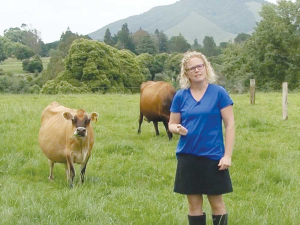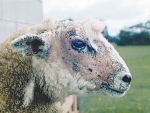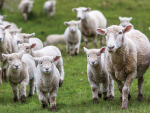Facial eczema in dairy cattle can cause significant production losses without visible symptoms, says a new group formed to raise awareness of the disease.
Dairy facial eczema (FE) can cost individual farmers more than $100,000 a year in lost milk production, a recent study has found. But many cows do not show clinical signs, so farmers often don’t know why milk loss is happening and end up drying off their cows early.
“It’s hitting farmers hard in the pocket: they’re losing 0.14-0.35kg milk solids per cow per day. We worked out that one of the herds in our study had lost $125,000, just in milk production,” said dairy veterinarian Emma Cuttance, the head of Veterinary Enterprises Group (VetEnt) Research, which is leading the project.
“Often, people don’t think FE is as big an issue as it is, because about 95% of the cattle that get the disease won’t display obvious skin lesions, even though the FE is causing damage to their livers,” said Cuttance.
“If our project can improve the number of farmers effectively managing this disease by even 20%, it will make a phenomenal improvement to the productivity, animal welfare and sustainability of the dairy industry.”
Zinc is currently the main way of treating FE. However, Cuttance explains that many farmers don’t administer enough to control the toxin that causes FE.
“Blood testing is the best way to determine how badly affected the cows are if they have FE. However, getting farmers to do blood tests can be tricky because of the cost and time involved.”
The project team brought in AgResearch to examine the wellbeing of cows affected by FE to see if there are other ways of identifying symptoms. The first trial involved putting pedometers on cows to observe their movements.
Having found no real difference in their behaviour compared to healthy cows, they moved on to analysing the blood profile of affected cows.
Cuttance says stress and pain can be detected in the blood, although analysis of the results is still in progress.
Another approach the team is exploring is photographing damaged livers at the meat works.
“If processing plants were required to grade livers according to damage and report back to farmers, that would increase understanding of how serious the issue is,” she said.
A range of resources will be made available through the DairyNZ website, including an online cost calculator, an investigation tool for testing zinc, and educational videos and webinars.
The Ministry for Primary Industries’ (MPI) Sustainable Farming Fund is supporting the Facial Eczema Action Group made up of veterinarians, dairy farmers and rural professionals intent on exploring ways of raising awareness of FE so that more farmers take preventative action.
Steve Penno, director investment programmes at MPI, says MPI’s support recognises that FE is an issue that needs to be addressed.
“Whichever way you look at it, it’s in farmers’ best interests to proactively manage this disease, both in terms of improving cattle health and wellbeing and the bottom line.”











